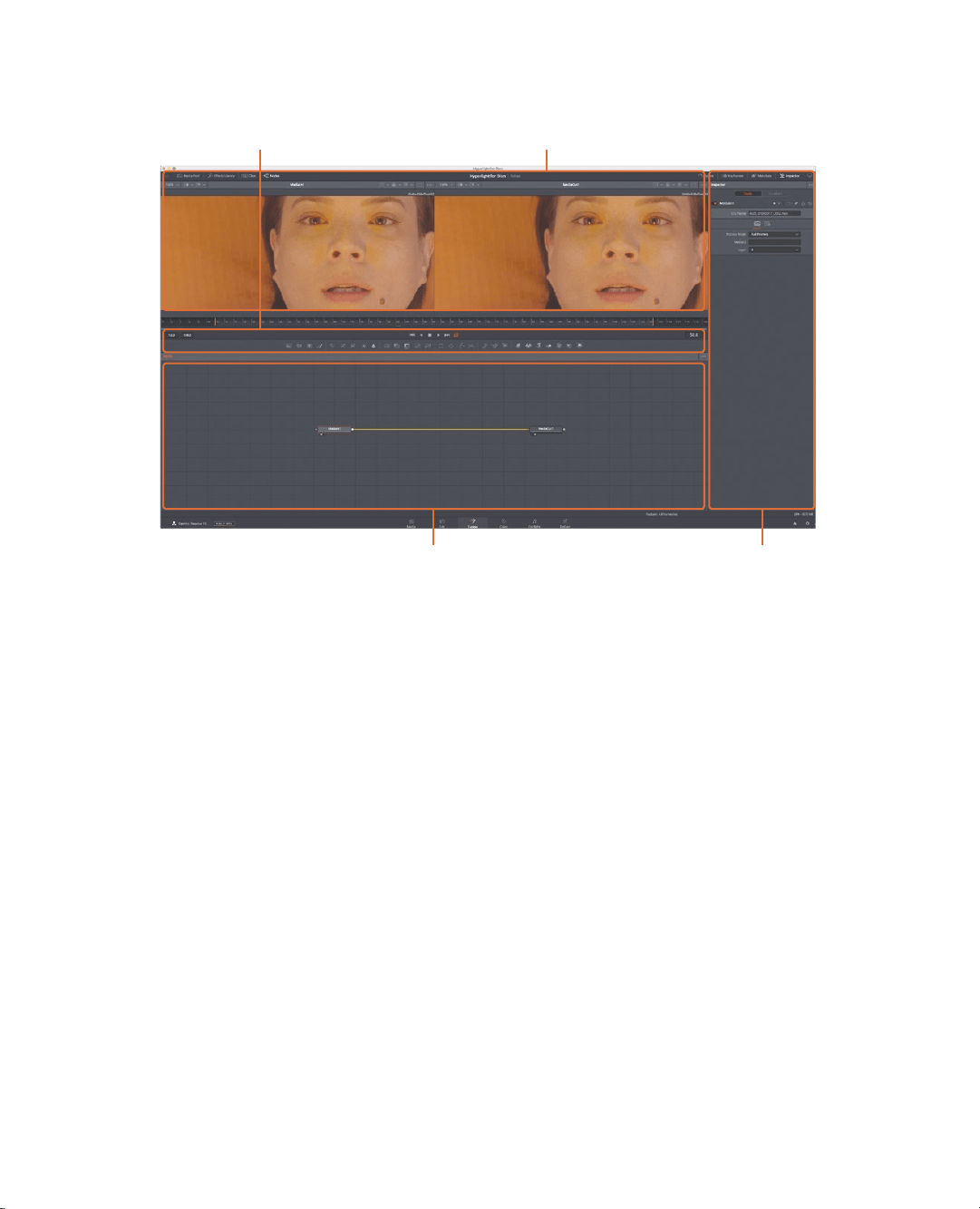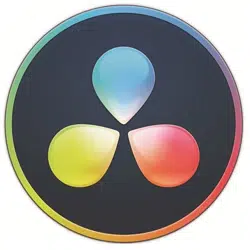Loading ...
Loading ...
Loading ...

261
Exploring the interface
In the Inspector, you can display
and manipulate the parameter
of any selected effect or tool
inthe node editor.
The work area can show any
combination of the node
editor, keyframes editor, or
splineeditor.
The left and right viewers
can show different images or
effects from your composite.
The toolbar has buttons for
adding commonly used effects
or tools to the node editor.
By default, the work area displays the node editor. Fusion does not use a timeline for
compositing or applying effects, as does the edit page. Instead, it uses a node tree in
which each image or effect is a node, as represented by a rectangular icon in the
nodeeditor.
Nodes are connected in a flowchart-like style, which makes it easy for you to see the
entire structure of a composite and quickly make changes. Working with nodes in
Fusion is much faster than hunting through nested stacks of precomposed layers and
filters, as you might have to do with a layer-based interface. The node tree flows from
one node to the next: one node applies an effect to an image and then passes it to
another node for additional processing or output.
5 With the mouse pointer located over an empty gray space in the node editor, hold down
the middle mouse button, and drag to pan the node tree into the center of the panel.
Every clip or image file that you bring into the Fusion page is represented by a media
in node in the node editor. The current media in node represents the clip from the edit
page. The media out node represents the image that is sent back to the timeline on
theedit page.
Loading ...
Loading ...
Loading ...
